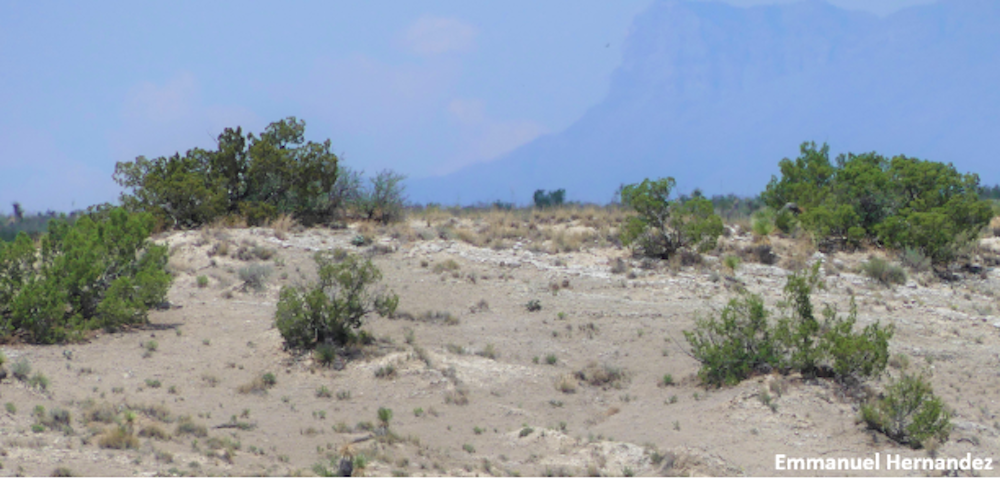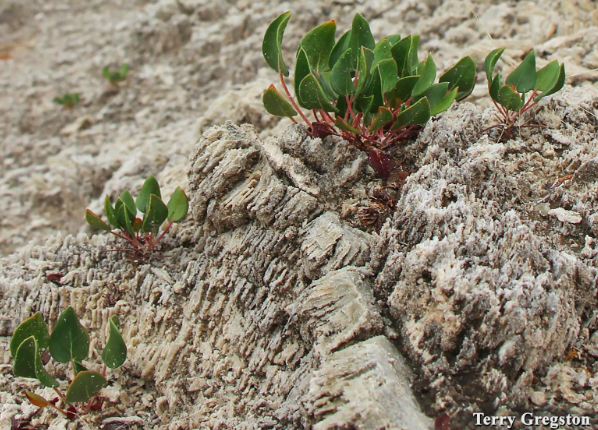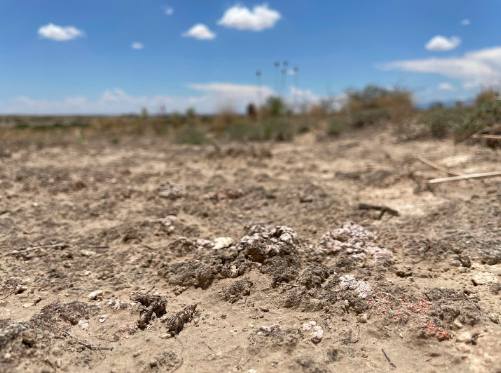
Buckwheat season approaches
By Sam Reiss, IAE Southwest
July 2022
Taking a look around, it appears we have landed on the moon. But a glimpse of the Guadalupe Mountains to the west confirms that we are indeed still in New Mexico. We walk with care across the landscape, making sure we don’t leave footprints behind us. After winding our way around spiny shrubs and scattered karst features, circumventing a few smaller draws, and slowly creeping along shallow diagonals cross-slope in and out of some bigger draws, we arrive at our destination: gypsum wild buckwheat (Eriogonum gypsophilum).
Gypsum wild buckwheat is a long-lived perennial wildflower that is endemic to gypsum soils of southeastern New Mexico. The habitat requirements of this species are so specific that there are only four known populations in the world - all of which are found in Eddy County, New Mexico. Gypsum wild buckwheat is currently listed as threatened by the US Fish and Wildlife Service, with one population protected under designated critical habitat. It is also arguably one of the most charismatic plants ever.
Part of what makes this species so unique is its ability to thrive in a specific micro-habitat of gypsum soils. Gypsum is an uncommon mineral that was left behind in a handful of scattered deposits when the ancient sea that once covered New Mexico evaporated millions of years ago. The gypsum landscapes here are composed of highly abrasive bedrock and very fine soils that are especially sensitive to compaction and erosion. Due to a variety of characteristics, including reflection off its white color, rigid structure, and nearly impenetrable layers, very few plants are adapted to live in this soil. Like any plants in the desert, but perhaps even more so, these gypsum-loving (gypsophilic) plants are built for survival.
Gypsum is highly erodible, creating karst features that are all over the Carlsbad area. You can think of it as a landscape built like Swiss cheese - there are little holes, caves, and hollow ground beneath your feet everywhere you walk. While we don’t see much of it around here, the rain (when it comes) can really do a number on this place. Channels where water courses down and into the main draw weave their way through the landscape like a spider web of veins. Water has clearly left its mark and continues to shape this landscape. In the areas that gypsum wild buckwheat populates, bio-crust is essential for preventing erosion - not just from water, but also from the powerful winds that come each spring. These thick, dark colored and variously structured living crusts carpet the soil surface and stabilize it wherever plants have not established themselves. It can take decades or even centuries to build up bio-crust this robust, which is why we walk with such care across the landscape; knowing that without them, this whole area would be a powdery cloud that would have washed away many lifetimes ago.
Thanks to the Bureau of Land Management rare plant crew, these populations are revisited annually to monitor demographic trends. These plots help us capture a snapshot of population health so that we can see how each population, and the species as a whole, is fairing from one year to the next. This information is used to help inform conservation actions for the species, including mitigation measures for nearby oil and gas impacts, or provide guidance for potential delisting of the species. Our annual sampling of buckwheat will start the first week of July. Happy buckwheat season!
IAE supports monitoring of this species through a contracted position in New Mexico’s Bureau of Land Management Carlsbad Field Office.
Restoration
Research
Education
Get Involved
Contact
Main Office:
4950 SW Hout Street
Corvallis, OR 97333-9598
541-753-3099
[email protected]
Southwest Office:
1202 Parkway Dr. Suite B
Santa Fe, NM 87507
(505) 490-4910
[email protected]
© 2024 Institute for Applied Ecology | Privacy Policy



